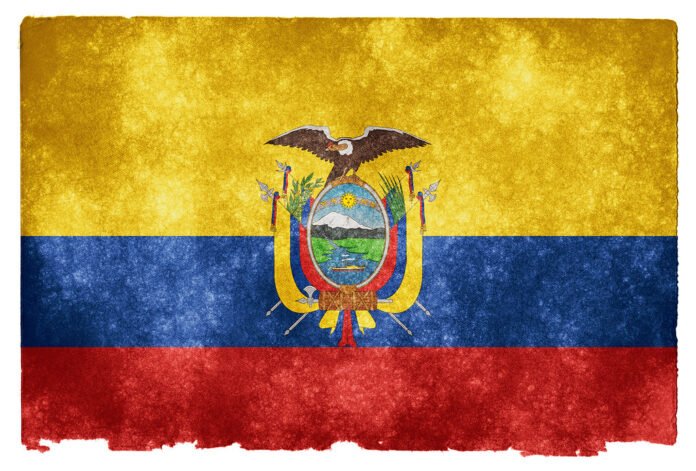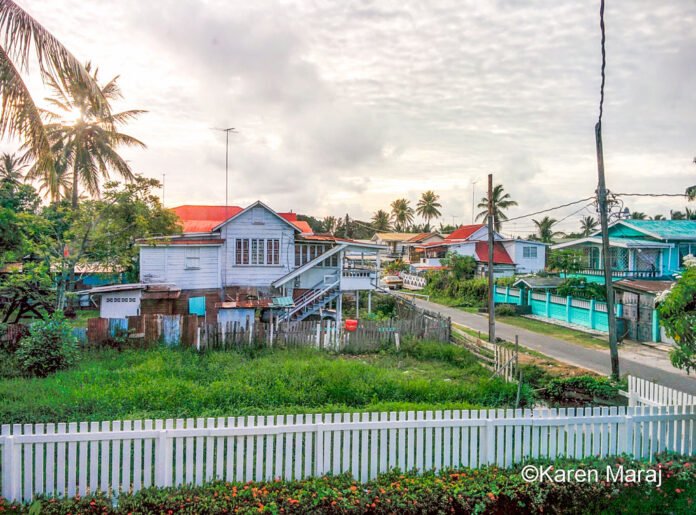Studying abroad in Ecuador offers more than just lectures and textbooks. It’s an opportunity to experience the Andes, the Amazon, and the vibrant culture of one of South America’s most diverse countries. But there’s one thing students can’t afford to overlook: health insurance.
Medical costs in Ecuador are lower than in the United States or Europe, but they can still be steep if you need private care, surgery, or evacuation. Public healthcare is available, but it often struggles with long wait times, limited English-speaking staff, and uneven quality. That’s why most overseas students — whether they’re in Quito, Guayaquil, or Cuenca — choose an international plan or a private local provider.
This article explores 10 leading health insurance options that international students in Ecuador frequently rely on. You’ll also see practical advice on how to choose the right plan, plus insights into “medicina prepagada,” Ecuador’s private prepaid health system.
1. Cigna Global
Cigna Global has earned a reputation as one of the most student-friendly international insurers. What makes them stand out is flexibility. Students can design their plan by starting with core inpatient coverage, then adding outpatient, vision, dental, or wellness benefits.
In Ecuador, Cigna works with many private hospitals, which means students can often access direct billing instead of paying upfront. Their customer support in English is reliable, and their global reach means you stay protected if you travel to neighboring countries during breaks.
Actionable tip: If you’re on a tight budget, start with a basic inpatient plan, then add outpatient coverage only if you anticipate frequent doctor visits.
2. Allianz Care (International Student Plans)
Allianz Care is widely recognized for tailoring policies specifically for international students. Their student plans usually cover inpatient and outpatient care, emergency evacuation, and in many cases mental health support.
A key benefit of Allianz is the ease of visa compliance. Ecuadorian universities sometimes require proof of coverage, and Allianz is well-regarded for issuing documents that meet those requirements quickly.
Actionable tip: Check whether your university requires evacuation coverage. If so, Allianz’s student packages make compliance straightforward.
3. Bupa Global / Bupa Ecuador
Bupa is a global leader with a strong presence in Latin America. In Ecuador, they partner with local clinics and hospitals, making it easier to access care without navigating complex reimbursement systems.
Their plans tend to be more comprehensive, covering preventive care, diagnostics, and even chronic condition management. Bupa’s premiums are usually higher than budget options, but the local network access justifies the cost for many students.
Actionable tip: If you want seamless access to private hospitals in Quito or Guayaquil, Bupa may offer the smoothest experience.
4. AXA – Global Healthcare
AXA offers tiered global plans (Foundation, Standard, Comprehensive) that allow students to balance price and coverage. Their 24/7 multilingual helpline is especially useful if Spanish isn’t your strongest language.
They are also known for wellness benefits, which may matter if you plan to stay in Ecuador for a multi-year degree and want preventive care options.
Actionable tip: Start with AXA’s Standard plan for a balance between affordability and coverage. You can upgrade later if your needs change.
5. William Russell
William Russell is smaller than Allianz or Cigna but appreciated for its simplicity. Their policies are transparent, without excessive fine print, and they’re often more affordable for younger students.
Their plans cover inpatient and outpatient care, and claims are usually processed without heavy paperwork. The drawback is a smaller direct billing network, so you may need to pay first in some clinics.
Actionable tip: If you prefer clarity over complex add-ons, William Russell is a straightforward choice.
6. VUMI (VIP Universal Medical Insurance)
VUMI is based in the Americas and has strong connections across Latin America. Their plans include high evacuation and repatriation limits, which is important given Ecuador’s varied geography. For example, if you’re studying in Cuenca and need a specialized procedure not available locally, VUMI can cover transfer to Quito or even Miami.
Actionable tip: If you’ll be traveling across Latin America or studying in smaller cities, prioritize VUMI’s evacuation benefits.
7. IMG (International Medical Group) – Student Plans
IMG’s Student Health Advantage plan is specifically built for international students. It covers hospital care, outpatient visits, mental health, emergency evacuation, and even sports injuries.
This makes IMG attractive for younger students who want affordable but robust coverage. Premiums tend to be lower than Bupa or Allianz, but deductibles can be higher.
Actionable tip: If you plan to participate in student sports, IMG’s sports injury coverage can save you hundreds of dollars.
8. GeoBlue (Student/Navigator Plans)
GeoBlue is popular among North American students because it is affiliated with Blue Cross Blue Shield. Its Navigator plan is designed for international students and provides strong global support.
In Ecuador, GeoBlue connects to private hospitals through its international assistance program, making access relatively seamless.
Actionable tip: If you’re from the U.S., GeoBlue may integrate more smoothly with your home insurance or family policy.
9. MSH International
MSH is a specialist in expatriate and student coverage. They maintain direct billing arrangements with many private clinics across Latin America, which spares you the headache of upfront payments.
They also offer preventive and wellness coverage, which is rare in budget student plans. This can be valuable if you’re planning a longer degree program in Ecuador.
Actionable tip: Ask whether your chosen hospital in Quito or Cuenca is part of MSH’s direct billing network. That single detail can save you significant out-of-pocket costs.
10. Mondassur
Mondassur is a European broker that tailors affordable plans for students. Their student policies for Ecuador start at around €30 per month, making them one of the most budget-friendly options.
The trade-off is coverage limits. Cheaper Mondassur plans may cap benefits, meaning a major hospitalization could leave you underinsured. Still, they are a good entry point for students who need proof of insurance without breaking the bank.
Actionable tip: If you choose Mondassur, confirm the maximum coverage limits and whether they meet your visa or university’s requirements.
Local “Medicina Prepagada” Options
Beyond international insurers, Ecuador has private prepaid health programs known as medicina prepagada. Popular providers include Humana, Ecuasanitas, Saludsa, and BMI.
These work like private memberships. You pay a monthly fee and gain access to a network of hospitals and clinics within Ecuador. They can be cheaper than international insurance but usually lack global coverage.
Actionable tip: Some students combine a low-cost global plan (for evacuation and international emergencies) with a local prepaid plan for everyday healthcare in Ecuador.
How to Choose the Right Plan
When comparing these options, focus on practical questions:
- Does it meet visa and university requirements? Ecuador often requires proof of coverage that includes emergency care.
- Are direct billing agreements in place? Paying upfront for surgery can be financially draining.
- What are the limits on evacuation and repatriation? Essential if you study in smaller cities or rural areas.
- Are mental health services included? Studying abroad can be stressful, and coverage here matters.
- What’s the deductible? Low premiums sometimes mean high out-of-pocket costs later.
Practical Scenarios
- Emergency in Cuenca: A student suffers appendicitis. With Allianz or Bupa, direct billing ensures treatment without upfront payment.
- Mental health support: IMG and Allianz cover counseling, easing access during stressful exam periods.
- Travel across borders: VUMI and Cigna offer regional coverage, helpful for trips to Colombia or Peru.
- Everyday check-ups: Local providers like Saludsa may be the most convenient for routine care.
Pro Tips:
Health insurance isn’t the most exciting part of planning your studies in Ecuador, but it’s one of the most important. International insurers like Cigna, Allianz, and Bupa provide robust global coverage. Mid-tier players like IMG, William Russell, and Mondassur balance affordability with essential benefits. Local prepaid plans add convenience and cost savings for day-to-day healthcare.
The smartest approach is to weigh your budget against your needs. If you expect frequent travel or want peace of mind for emergencies, a global insurer is worth the premium. If you’re more concerned about regular doctor visits, pairing a local prepaid plan with basic international coverage can work well.
Either way, by choosing carefully, you’ll protect your health and your finances — leaving you free to focus on your studies and enjoy everything Ecuador has to offer.
References:
- Allianz Care. (n.d.). International student health insurance. Allianz. Retrieved October 3, 2025, from https://www.allianzcare.com/en/personal-international-health-insurance/who-we-help/students.html
- Bupa Global. (n.d.). Our international facility finder. Bupa Global. Retrieved October 3, 2025, from https://www.bupaglobal.com/en/facilities/finder
- Cigna Global. (n.d.). International student health insurance. Cigna Global. Retrieved October 3, 2025, from https://www.cignaglobal.com/students
- Cotacachi Health Network. (n.d.). Medical insurance options. CotaHealth. Retrieved October 3, 2025, from https://cotahealth.org/medical-insurance-options/
- GeoBlue. (n.d.). International student health insurance. GeoBlue. Retrieved October 3, 2025, from https://www.geobluestudents.com
- IMG (International Medical Group). (n.d.). International student insurance. IMG. Retrieved October 3, 2025, from https://www.imglobal.com/international-student-insurance
- Mondassur. (n.d.). Ranking of international health insurance for expats in Ecuador. Mondassur. Retrieved October 3, 2025, from https://internationalhealth.com/en/IH-Blog/Health-Insurances/Ranking-insurance-for-expats-in-Ecuador
- MSH International. (n.d.). International health insurance in Ecuador. MSH International. Retrieved October 3, 2025, from https://www.msh-intl.com/en/countries-list/international-health-insurance-ecuador-expats.html
- VUMI. (n.d.). International health insurance with worldwide coverage. VUMI. Retrieved October 3, 2025, from https://www.vumichoice.com/en
- William Russell. (n.d.). Expat insurance for individuals & businesses. William Russell. Retrieved October 3, 2025, from https://www.william-russell.com
- AXA – Global Healthcare. (n.d.). Expat health insurance. AXA. Retrieved October 3, 2025, from https://www.axaglobalhealthcare.com/en/expat-health-insurance


